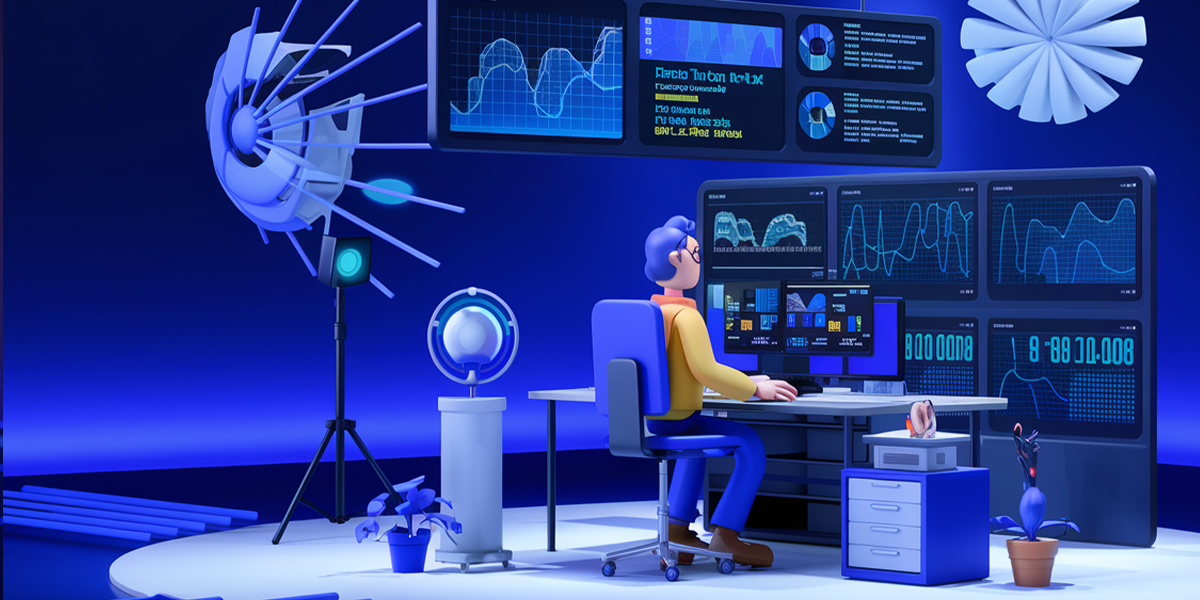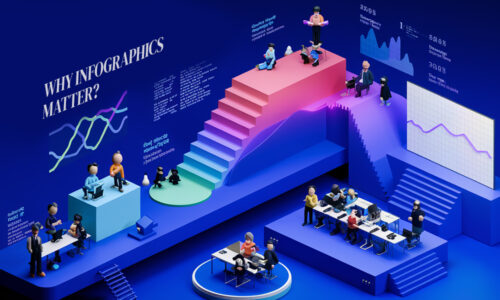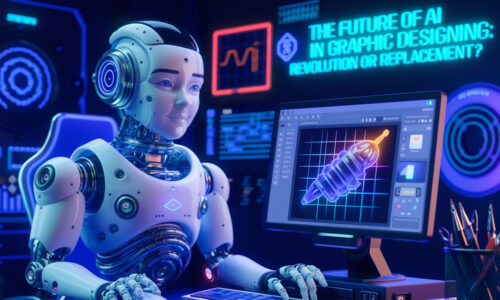
The Future of Data Visualization: Trends Shaping 2025 and Beyond
- graphicalization
- May 31, 2025
- Blog
- 0 Comments
In today’s world, data is everywhere. From social media to business reports, we are surrounded by numbers, charts, and information. But just having data isn’t helpful unless we can understand it. That’s why data visualization is so important. It helps turn complex data into simple pictures—like charts, graphs, maps, and dashboards—so we can see trends, find insights, and make smart decisions.
As we move further into 2025 and beyond, new technologies are making data visualization faster, smarter, and more interactive. In this article, we’ll look at the top trends shaping the future of data visualization and how they can help professionals in all fields—from marketing and finance to healthcare and education.
1. AI-Powered Visualizations: Smarter Tools for Smarter Insights
One of the biggest changes in data visualization is the use of Artificial Intelligence (AI). In the past, creating a good chart or dashboard took time and skill. Today, AI tools can help create visualizations in just seconds.
How AI is changing data visualization:
- Auto-generated charts: AI tools can suggest the best chart type based on your data.
- Insight discovery: AI can scan large datasets and highlight trends, patterns, and outliers.
- Natural language explanations: Some tools now give short summaries, so you don’t need to read every number.
- Predictive visuals: AI can even predict future trends and display them on your charts.
These tools save time, reduce errors, and help more people make sense of their data—even if they’re not data experts. AI also helps organizations make faster, more confident decisions.
2. Interactive and Real-Time Dashboards: Live Data at Your Fingertips
Dashboards have always been popular in business. They show important data in one easy-to-read screen. But in 2025, dashboards are no longer static—they are interactive and update in real time.
Features of modern dashboards:
- Real-time updates: Data is refreshed instantly, so you always see the latest numbers.
- Click-to-explore: Users can click on charts or filters to dig deeper into specific data points.
- Custom alerts: Dashboards can send notifications when certain numbers go too high or too low.
- Cloud access: Dashboards can be viewed from anywhere, on phones, tablets, or laptops.
This level of flexibility is helping businesses become more agile. Managers and teams can make decisions based on live information instead of waiting for reports at the end of the week or month.
3. 3D and Augmented Reality (AR): Bringing Data to Life
Another exciting trend is the use of 3D graphics and Augmented Reality (AR) to tell data stories. While flat charts and graphs are useful, they can be limited when showing complex relationships or spatial data.
Examples of 3D and AR in data:
- 3D graphs: You can rotate and zoom to explore data in new ways, which is great for scientific, geographic, or network data.
- AR dashboards: Using smart glasses or a smartphone, users can see data layered over the real world—like viewing a machine’s stats while standing next to it.
- Virtual presentations: Data can be shown in a virtual room or 3D environment, making it more engaging for audiences.
These tools help people understand data faster and in more meaningful ways. They’re especially useful in fields like architecture, engineering, medical imaging, and logistics.
4. The Rise of Data Storytelling: Combining Data and Narrative
Data alone isn’t enough. People remember stories, not just numbers. That’s why data storytelling is becoming a key part of modern data visualization.
What is data storytelling?
It means combining data with text, visuals, and design to tell a clear and compelling story. Instead of just showing charts, you explain what they mean and why they matter.
Why it’s important:
- Makes data easier to understand.
- Helps audiences connect emotionally with the information.
- Encourages better decision-making.
In 2025, the best data tools don’t just create charts—they help you tell the story behind the data.
5. Data Democratization: Making Data Tools Easy for Everyone
Thanks to new technology, more people than ever can work with data. You don’t need to be a data scientist to use AI dashboards or build a report. This is called data democratization—making data easy to access and use for everyone in a company.
How this helps:
- More teams can make data-driven choices.
- Less waiting for reports from the analytics department.
- Increased collaboration and faster innovation.
User-friendly tools, drag-and-drop dashboards, and smart recommendations are helping businesses grow by putting data in the hands of more people.
Frequently Asked Questions (FAQs)
Q1: What is data visualization and why is it important?
A: Data visualization means turning data into pictures like charts and graphs. It helps people see patterns, understand information, and make better decisions faster.
Q2: How is AI helping data visualization?
A: AI can quickly scan data, find trends, and even create charts and summaries. It helps save time and makes it easier for non-experts to use data.
Q3: What are real-time dashboards?
A: Real-time dashboards show live data that updates instantly. This helps teams react quickly to changes and make faster decisions.
Q4: What is Augmented Reality (AR) in data?
A: AR shows data in the real world through smart glasses or phones. For example, you can see machine data while standing in a factory or view sales numbers in a virtual store.
Q5: Who can use these new tools?
A: Thanks to simple designs and AI support, almost anyone can use modern data tools—not just data scientists. This includes marketers, teachers, doctors, and more.
Q6: What should companies do to prepare for these trends?
A: Companies should start using AI tools, upgrade their dashboards, train their teams, and explore new technologies like AR. This will help them stay competitive and make better use of their data.
Final Thoughts
The future of data visualization is smart, fast, and full of possibilities. With the help of AI, real-time tools, 3D views, and AR, we can now do more with data than ever before. These trends are not just for tech companies—they’re for everyone.
Businesses that invest in these tools today will be ready for the challenges of tomorrow. They’ll be able to tell better stories, make smarter choices, and stay ahead in a world that runs on data.




